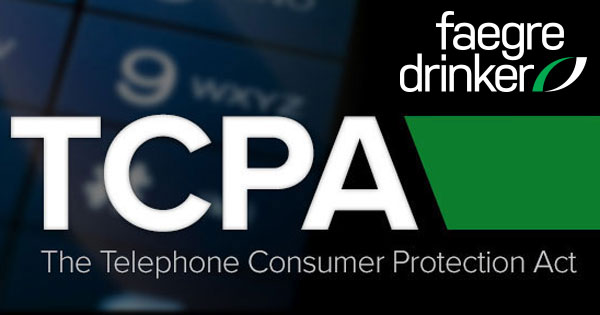A recent appellate opinion out of Oklahoma state court provides an important reminder that putative classes should not include people who did not receive the communication at issue. See Ketch v. Royal Windows, 113986 (Ct. Civ. App. Okla., Nov. 08, 2016).
In Ketch, the plaintiff filed suit after receiving an allegedly unsolicited fax advertisement from the defendant, from which it had previously requested a catalog. The defendant admitted that the fax advertisement did not have any opt-out language and evidently did not seek a retroactive waiver from the FCC. The plaintiff then moved for summary judgment on behalf of itself and a previously certified class. The trial court granted that motion, finding that Royal was liable to the tune of $290,000.00, i.e., $500 for each fax that had been transmitted.
Royal appealed and argued that the trial court had erred both in finding liability and calculating damages. As for liability, Royal argued that summary judgment should not have been entered because the TCPA only requires an opt-out notice for unsolicited faxes, and because there was a genuine issue of material fact regarding whether the faxes were unsolicited. The court disagreed, noting that the FCC’s regulations go further than the TCPA by requiring opt-out notices for solicited faxes as well. See 47 C.F.R. § 64.1200(a)(4)(iv) (during the relevant time period, 47 C.F.R. § 64.1200(a)(3)(iv) (2007)) (“A facsimile advertisement that is sent to a recipient that has provided prior express invitation or permission to the sender must include an opt-out notice.”); see also In re Rules and Regulations Implementing the Telephone Consumer Protection Act of 1991; Junk Fax Prevention Act of 2005, 71 Fed. Reg. 25967-01, 25972, 2006 WL 1151584 (2006) (“[E]ntities that send facsimile advertisements to consumers from whom they obtained permission must include on the advertisements their opt-out notice and contact information to allow consumers to stop unwanted faxes in the future.”). Notably, however, the court did not address whether the FCC had the statutory authority to promulgate such a regulation in the first place.
As for damages, Royal argued that the trial court’s calculation of damages was inflated because it had assumed that everyone on its customer list had received every facsimile during the class period. Royal contended that it sent faxes only to those customers that were “active”—i.e., those that had had some contact or account activity with Royal—in the preceding year. As a result of that policy, class members with inactive accounts may not have received every fax that had been transmitted.
Royal also argued that this problem was compounded by the fact that certain faxes had been sent weeks earlier than Ketch had alleged, and as a result the court’s calculation of damages was inflated. Royal contended that the trial court should have determined the dates on which faxes had been sent in order to determine the group of recipients that could be awarded damages arising from its transmission. For example, Royal identified a class member that had not interacted with Royal until March 18, 2008, but that Ketch alleged had received a fax that was dated “April 2008.” Accordingly, Royal argued, if the fax had been sent prior to March 18 as the “April 2008” date suggested, that class member would not have been “active,” and therefore would not have received the fax.
The court observed that several faxes appeared to have been sent during times in which some class members were inactive, that other faxes lacked dates altogether, and that Ketch had failed to offer any evidence supporting its assertions as to the dates on which those faxes had been sent. Agreeing with Royal that genuine issues of material fact existed regarding the dates of the faxes and the number of violations, the court remanded for further factual determination. In doing so, it provided a helpful reminder that defendants should hold plaintiffs to their burdens of proof, and that classes should not be defined—let alone certified—in a way that includes people who have no viable claim or actual harm. Indeed, it is not at all clear that the individual members of the putative class in this case were ever reasonably ascertainable by reference to objective criteria—an important requirement that has divided the federal courts. See Briseno v. ConAgra Foods, No. 15-55727 (9th Cir. Jan. 3, 2017) (discussing circuit split).

